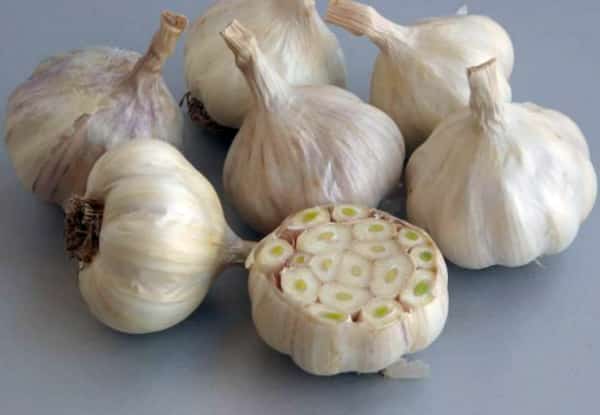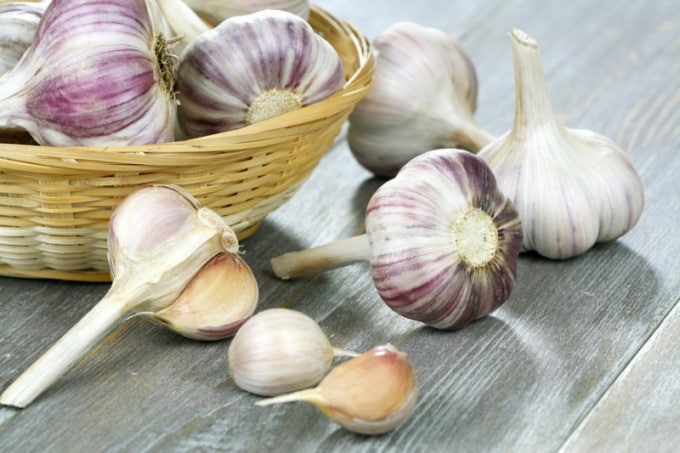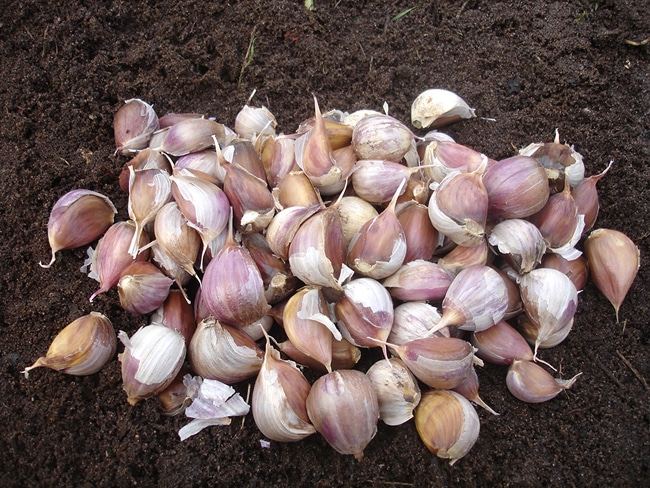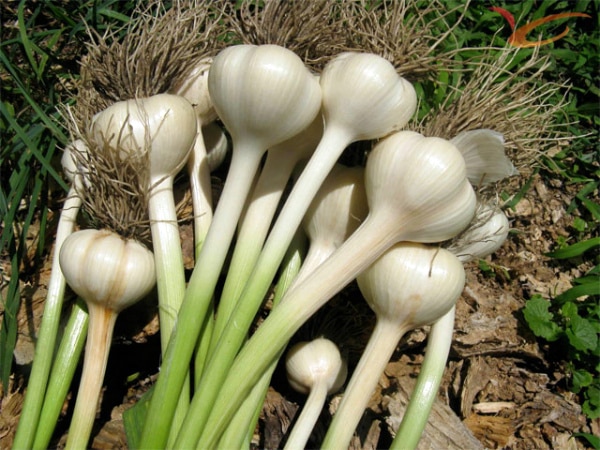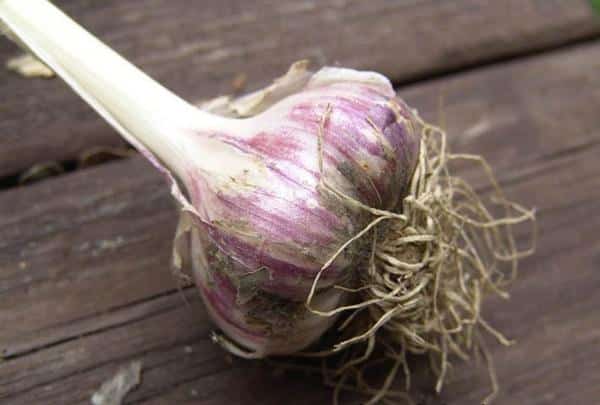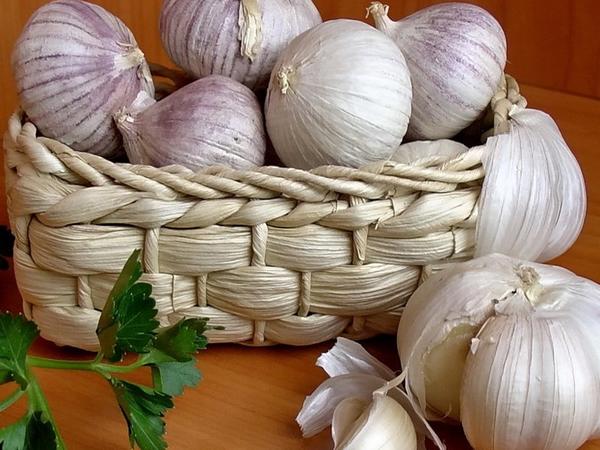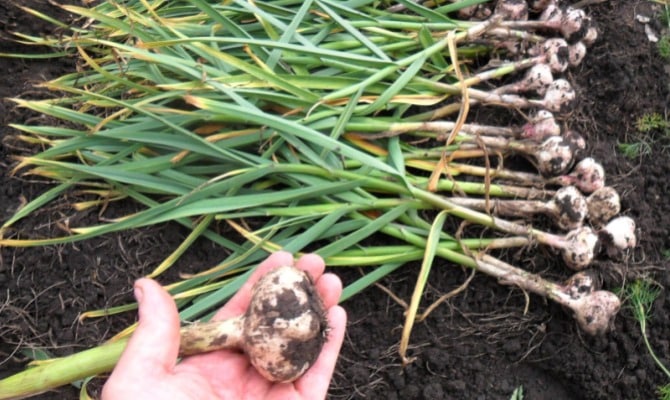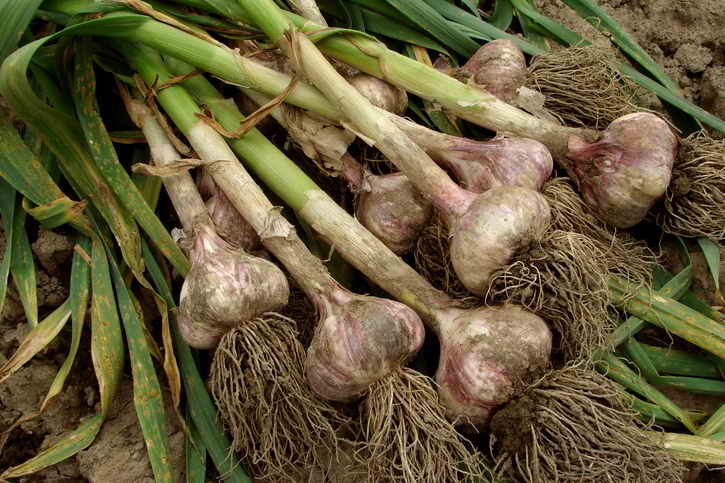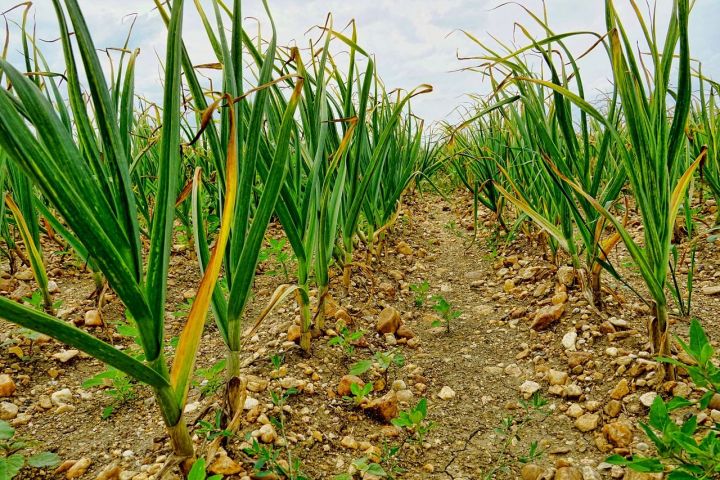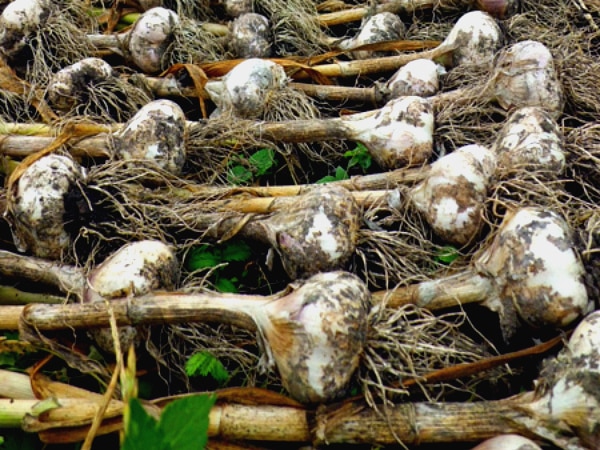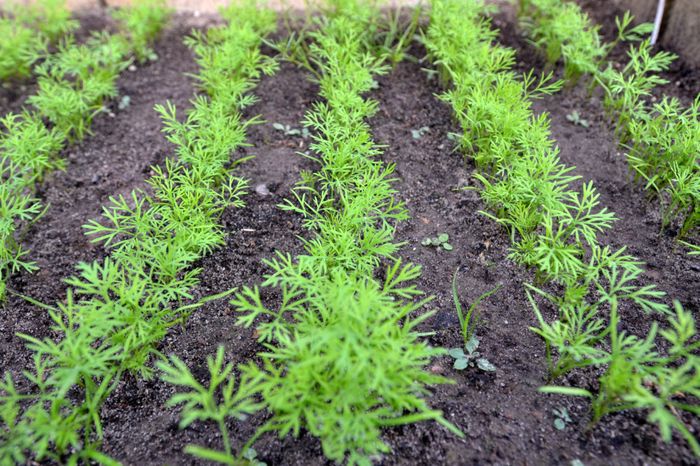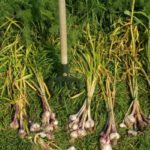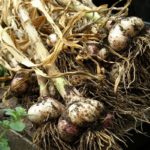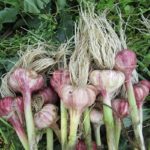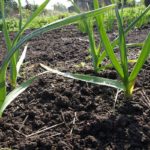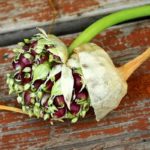Many gardeners grow garlic, as this vegetable is considered indispensable in the preparation of many homemade preserves and vegetable dishes. The quality of the garlic harvest directly depends on when it was harvested. Therefore, it is recommended to figure out in advance when it is better to dig up garlic in the Moscow region in 2024.
- Varieties of spring garlic for the Moscow region
- Moscow
- Degtyarsky
- Gulliver
- The best winter varieties for the Moscow region
- Moscow region variety of winter garlic
- Gribovsky 60 and anniversary varieties
- Winter Komsomol member
- Dates for planting and harvesting garlic in the Moscow region
- Winter garlic
- Spring garlic
- Signs of maturation
- Harvesting and storage
- What can you plant after garlic?
- Moon calendar
- Conclusion
Varieties of spring garlic for the Moscow region
Many residents of the Moscow region are engaged in growing spring varieties of garlic in open ground. The distinctive features of such garlic bushes include the shelf life of the harvested fruits and the yield. People who grow spring garlic on their plots manage to collect more than 10 kg of fruit. Collected ripe bulbs can be stored under optimal conditions until the start of the next season.
There are three main varieties of spring garlic that can be grown in the Moscow region.
Moscow
This garlic variety belongs to the mid-season types of vegetables that ripen within one and a half months. Its main advantage is considered to be a high level of productivity, which allows you to collect 2-3 kg of ripe bulbs from ten square meters. The fruits of Moscow garlic have a round shape, their surface is covered with a dense skin. On average, a ripe head weighs about 15 grams.
The variety is quite picky about the soil, so areas with soil that is rich in mineral components are selected for its cultivation.
Also, when choosing a site, pay attention to the acidity of the soil, which should not be too low or high.
Degtyarsky
This variety was recently bred specifically for cultivation in the Moscow region and other regions with similar climatic conditions. It belongs to the types of garlic with an average period of ripening of the bulbs. A characteristic feature of Degtyarsky is the color of its leaves, which are bright green.
When growing garlic in optimal conditions, ten square meters can yield more than 3 kg of bulbs. Ripe fruits consist of 15-16 teeth and weigh about 40 grams. They are covered with reddish scales with small white stripes.
Gulliver
Gulliver is considered the largest garlic variety that can be grown in the Moscow region. The leaves of an adult bush reach 45 mm in width and 50-60 cm in length. In this case, more than ten leaves are formed on one plant.
However, Gulliver is famous not only for its large leaves, but also for its bulbs. On average, the weight of one ripe fruit reaches 100 grams. If you grow a vegetable in fertile soil, the mass of the bulbs increases to 200-300 grams.
Each Gulliver's head is covered with three layers of gray scales, under which there are 3-4 garlic cloves.
The best winter varieties for the Moscow region
Some gardeners prefer to grow winter varieties of garlic. They differ from spring varieties by the uniform arrangement of teeth in the head, large size of fruits and resistance to common diseases.
Moscow region variety of winter garlic
A fairly young species that was bred specifically for cultivation in the Moscow region and other regions of the middle zone. Mature leaves grow up to 50 cm in height. They are painted bright green and covered with a thin layer of wax. The main advantage of Moscow region garlic is its fertility. You can collect more than 2 kg of bulbs per square meter.
The fruits are covered with light scales, on the surface of which thin purple stripes are visible. Each garlic head consists of 6-8 cloves weighing about 13-15 grams.
Gribovsky 60 and anniversary varieties
Gribovsky 60 and Gribovsky Jubilee are fast-ripening varieties of garlic. Their distinctive features include resistance to bacterial diseases and the most common pests.
The bulbs of such varieties are very large, as their weight reaches 50-65 grams.If all agrotechnical rules are followed during cultivation, the weight of the fruit can increase to 100 grams. The bulbs consist of 7-10 cloves weighing 5-12 grams. All teeth are covered in several layers of dense, reddish scales.
Winter Komsomol member
The variety is frost-resistant and therefore ideal for planting in open ground. In the process of growing Komsomolets, the bushes form dense and large bulbs weighing 30-40 grams. They are covered with white scales, which over time acquire a faint shade of purple. It will take at least three months for the bulbs to fully ripen.
Dates for planting and harvesting garlic in the Moscow region
It is recommended to plant winter varieties of garlic in the fall, at the end of October. This is the most favorable time for planting, since the ground will still be warm enough, and by winter the planted garlic cloves will have time to take root.
The time for collecting ripe bulbs depends on several factors, which include the climatic characteristics of the region and the chosen planting method.
Of course, the ripening time for the heads of many varieties is approximately the same. However, sometimes due to warm weather the fruits ripen much earlier. Therefore, before planting a vegetable, it is recommended to familiarize yourself in more detail with the timing of planting and harvesting the main types of garlic.
Winter garlic
In temperate climatic conditions, the ripening of winter crops begins in the second half of summer. Therefore, the bulbs are dug out from the garden at the end of August or at the beginning of September. If the summer is very hot, it is better to harvest a few weeks earlier.
Spring garlic
This type of garlic is harvested a little later - in the second half of September.Experienced gardeners advise harvesting 10-15 days after harvesting winter bulbs. However, it is impossible to determine the exact date of garlic harvest, since everything depends on weather conditions.
Signs of maturation
Before you start harvesting, you need to make sure that it is fully ripe. To do this, it is recommended to familiarize yourself with the main signs of full ripening of garlic bulbs.
To determine the level of fruit ripening, you need to carefully examine them. Ripe garlic leaves droop and gradually dry out on the bushes.
Most often, signs of ripening begin to appear at the end of July. If they appeared much earlier, this indicates the presence of a disease or pests. Also, to determine the ripeness of garlic, the arrows that appear on the bushes in early summer are examined. As they ripen, they, like the leaves, begin to dry out.
Some gardeners dig several bulbs out of the ground to check ripeness. They are considered ripe if:
- the film from the surface of the teeth can be removed without difficulty;
- the head is covered with several layers of scales;
- the bulb is hard to the touch.
If the dug up fruits are too soft or there are no scales on their surface, this indicates that the garlic is unripe.
Harvesting and storage
Three weeks before harvesting, it is recommended to completely stop moistening the soil to speed up the ripening of the bulbs. After the heads have fully ripened, you can begin to harvest.
The process of harvesting garlic heads is carried out in several stages:
- Digging up bushes with a shovel or pitchfork. Do not pull out the heads with your hands, as this may damage the teeth.
- The adhering soil is carefully removed from the dug-up fruits by hand.Do not hit the heads on the ground or shake them vigorously.
- The dug up crop is carefully laid out in a row in the sun for further drying. It will take at least four days for the garlic to dry completely.
- Dried leaves and stems are separated from the heads.
Winter varieties of garlic are advised to be stored in rooms with low temperatures, since in such conditions the crop will not spoil longer. Spring garlic is not so demanding on temperature, so it is well stored in warm rooms.
What can you plant after garlic?
Garlic is considered an excellent precursor for most vegetables, but not for itself. Gardeners with many years of experience do not advise growing garlic bushes in the same place for two years in a row, since after replanting the yield deteriorates several times.
In the area where garlic used to grow, it is recommended to plant the following vegetables:
- early varieties of potatoes;
- carrot;
- cabbage;
- bell pepper;
- blue;
- tomatoes;
- beet;
- parsley;
- dill.
Plants belonging to the nightshade family grow best after garlic. Such vegetables fully utilize the nutritional components that remain on the site and gradually restore soil fertility.
Moon calendar
Some gardeners prefer to harvest garlic according to the lunar calendar. With its help, you can not only find out information about the timing of planting vegetables, but also figure out when is the best time to harvest a ripe crop. The lunar calendar takes into account the cycles of the month, its phases and even the signs of the zodiac.
Thanks to this, you can find out all the necessary information about new moons, full moons and the timing of the moon’s transition to a new phase.
According to the lunar calendar for 2024, harvesting can be done throughout August and July.Favorable dates in July are the 15th, 16th, 21st, 23rd, 25th and 27th. In August, it is better to harvest garlic on the 10th, 14th, 17th, and 21st. June is considered an unfavorable month for digging bulbs. If you harvest at the beginning of summer, it will begin to deteriorate and dry out faster.
Conclusion
Garlic is considered a fairly popular vegetable that almost every gardener grows. To grow such a plant in the Moscow region, you need to become familiar with the most suitable varieties for this region and the characteristics of harvesting a ripe crop.

